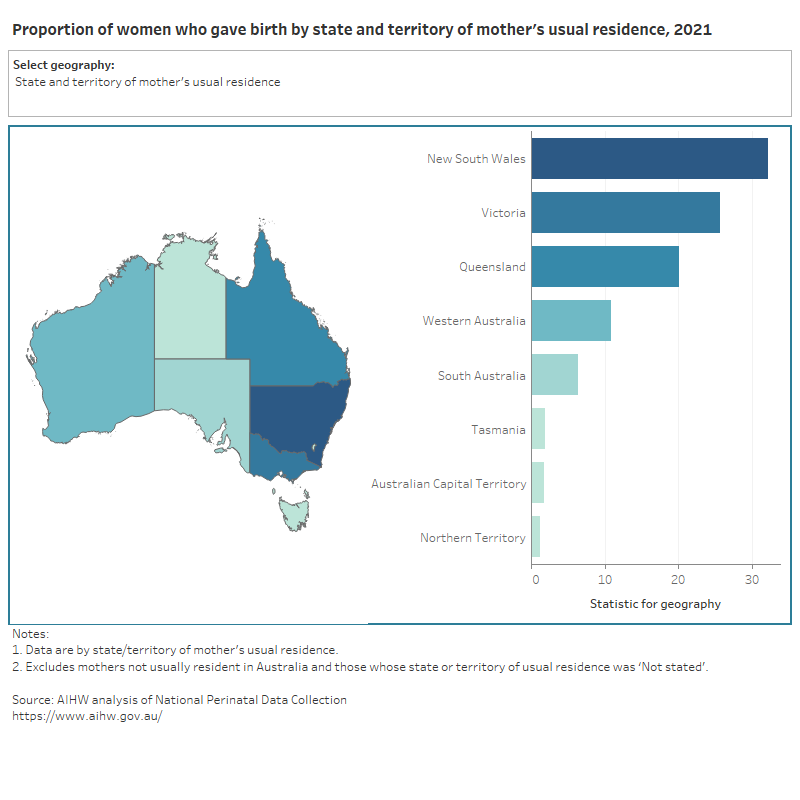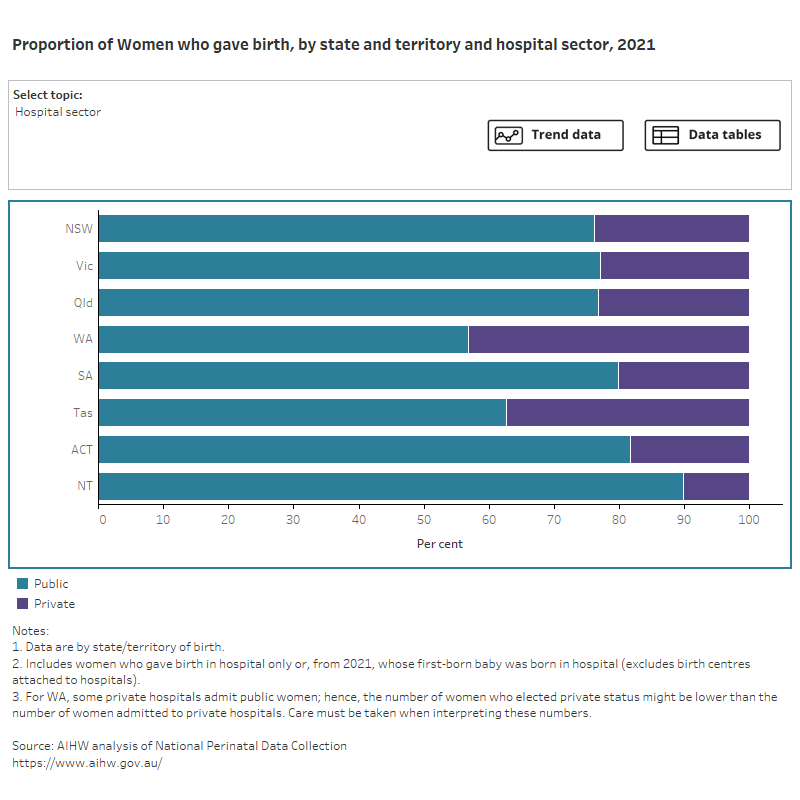Geography
Where mothers live can impact on their access to services. Figure 1 presents statistics for the usual place of residence of women who gave birth in 2021, by various geographies.
Figure 1: Women who gave birth, by selected geography
Map of proportion of women who gave birth across Australia grouped by various geographies.

The birth rate of women of reproductive age (15 to 44 years) varies by state and territory, but overall birth rates have decreased over time for all jurisdictions. The greatest decrease in birth rate was seen for the Northern Territory (from 72 per 1,000 women in 2011 to 65 per 1,000 women in 2021) followed by Tasmania (65 to 58), Queensland (65 to 60), the Australian Capital Territory (65 to 61), New South Wales (64 to 61), South Australia (62 to 59), Victoria (62 to 60), and Western Australia (64 to 62).
Where a mother lives can differ from where she gives birth. Figure 2 presents data for 2021 by the state or territory where a mother gave birth (hospital sector, Indigenous status, maternal age, parity, and patient election status) and where she lived (remoteness area and socioeconomic status). Select the trend button to see how data has changed over an 11-year period (where available).
Figure 2: Proportion of women who gave birth, by state and territory and selected topic
Bar chart shows state or territory of residence or birth by selected topics and a line graph shows topic trends between 2011 and 2021.

Understanding differences between states and territories is important for planning health service delivery. In 2021, some characteristics differed by state and territory:
- 5.3% of births in the Northern Territory were teenage mothers (aged under 20) (compared with 0.8% of births in the Australian Capital Territory)
- 5.0% of births in Victoria were mothers aged 40 or more (compared with 3.2% of births in Tasmania)
- 33% of births in the Northern Territory were First Nations mothers (compared with 1.6% of births in Victoria)
- 4.6% of births in the Northern Territory were mothers with 4 or more previous pregnancies (compared with 1.8% of births in the Australian Capital Territory)
- Around 2 in 5 births in the Northern Territory were within Remote (20%) or Very remote (19%) areas (compared with less than 1% of births in Victoria or NSW).
It is also important to consider the socioeconomic status and remoteness area in which the mother lives (based on the mother’s usual residence).
For more information on births by state and territory see National Perinatal Data Collection annual update data table 1.1.


